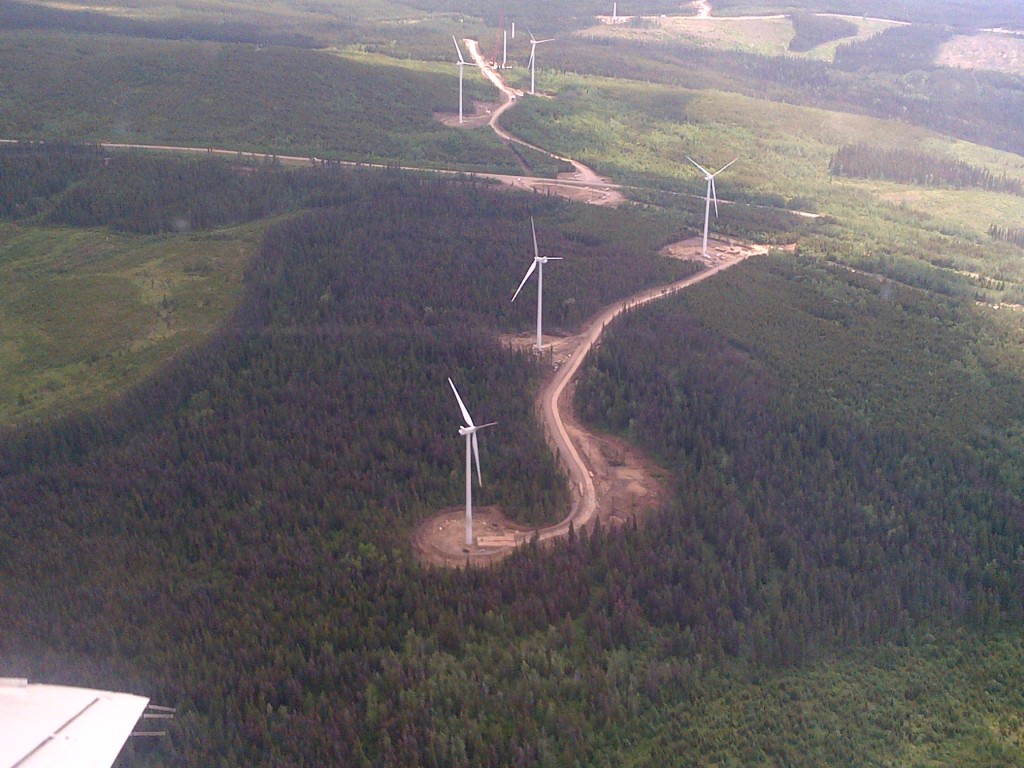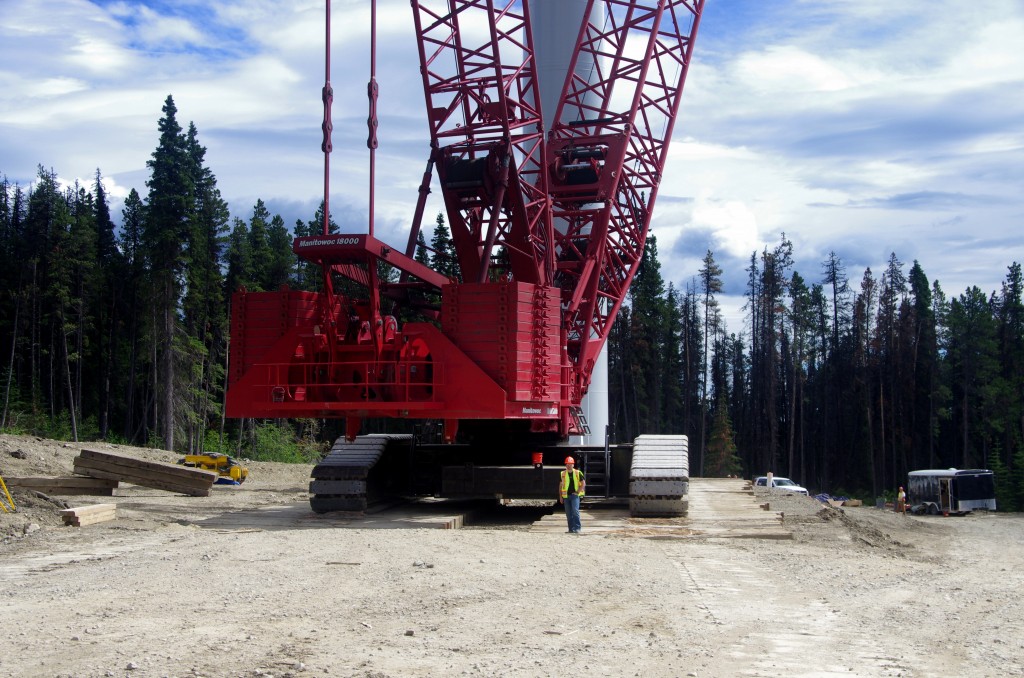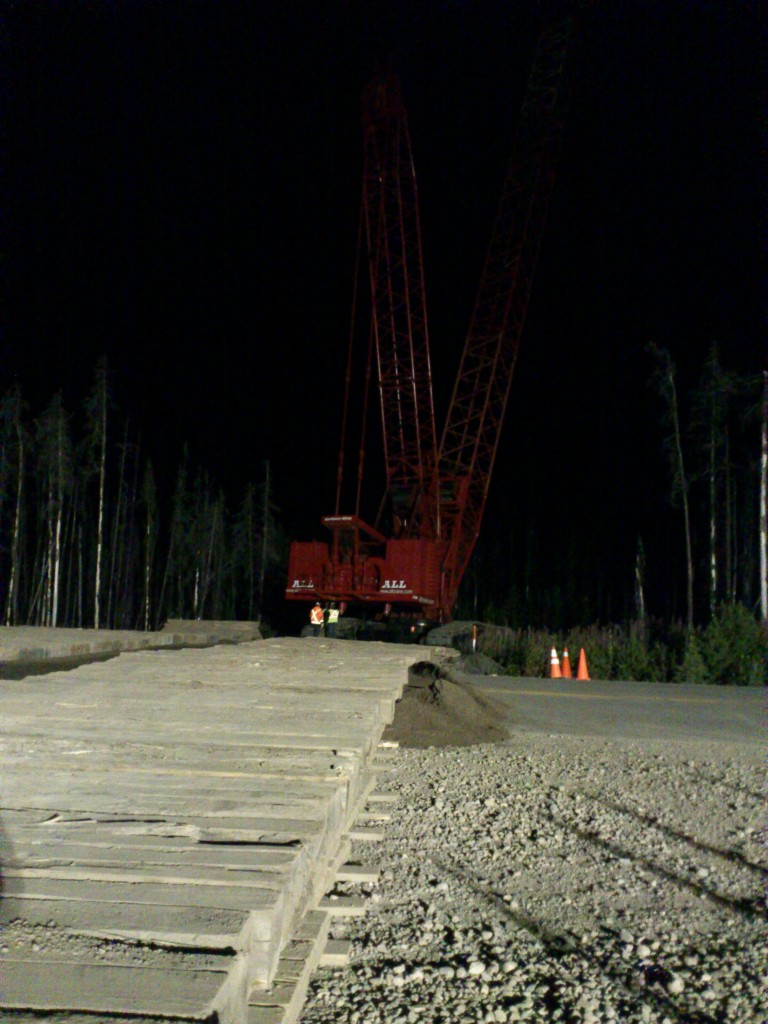
Q. Why did the cranes cross the road?
A. To build the wind farm on the other side.
The cranes in this instance are two colossal pieces of machinery. Each weighs 680 tonnes (equal to 200 adult elephants or almost 1.5 million pounds), and has a boom that looms 117 metres up (longer than two Olympic-sized swimming pools). They’re being used by Eagle West Wind Energy to erect wind turbines for Capital Power’s Quality Wind Project, near Tumbler Ridge, and the Ministry of Transportation and Infrastructure is helping them cross the road where the project straddles Highway 52.
Normally, hefty tracked vehicles like cranes are not allowed to travel on provincial highways, because they may damage the road. But we’ve developed a solution with Capital Power, Eagle West Wind Energy and Mortenson Canada Cooperation (the main contractor for the project) that enables the two cranes to be moved, without harm to the highway. This is hugely important to the wind power company, because otherwise the cranes would have to be dismantled and reassembled – a task that would take 30 trucks and up to two weeks to complete.
To avoid this huge expense for the green energy project, and to protect Highway 52 at the same time, before the cranes make their moves, a carefully scheduled and executed plan unfolds.

The date is scheduled and highway users are notified on DriveBC, that there will be a road detour between between 10 p.m. and 1 a.m. On the day of the move, large construction lights are stationed and switched on, and traffic controls are posted to direct motorists through the detour. The Mortenson crew lays 20 centimetres (or eight inches) of sand over the road, then tops it with a 30-centimetre (or 12-inch) thick “mat” of wood beams laid side by side. This protects the road from track marks, and distributes the weight of the crane more widely over the road.
The crane creeps across the route at the sluggish rate of three and a half kilometres per hour, and reaches the other side in about five minutes. Then the road coverings and signage are removed to re-open the route to traffic.

This may be the heaviest load ever to travel over a provincial highway, and we don’t take that lightly. For instance, a ministry area manager is there during the move to watch over the road. Prior to authorizing the three moves underway until mid September, we ran a Benkelman beam over the road to measure its strength. We’ll be doing that again to check for any changes. Should there be an unanticipated impact to the road’s integrity, Capital Power has posted a bond to pay for any restoration work needed.
By the end of this year (2012), the 142-megawatt, 79-turbine Quality Wind Project is expected to be operating. It will generate clean, renewable energy – providing enough electricity for the yearly power needs of 43,000 B.C. homes.
We’re charged up to be contributing to green energy development, by helping the construction cranes cross the road, while maintaining the safety and quality of our highway at the same time.
Join the discussion